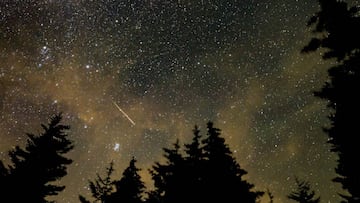Perseid meteor shower: when and how to view it at its peak
Track the Perseid meteor shower in the August night’s sky. Here’s how to view the large comet, where to see it, and when to see it at its peak.

Perseid meteor shower: when and how to view it at its peak
The Perseids meteor shower happens annually in the month of August. This is when the earth’s orbit collides with the debris from Comet Swift-Tuttle.
How big is the Comet Swift-Tuttle?
The comet, discovered in 1962 by Lewis Swift and Horace Parnell Tuttle, is around 16 miles wide. Comets are essentially organic snowballs that orbit the sun, and this is no different. The Swift-Tuttle is made of dust, ice, rock and organic material and it’s the biggest comet that passes the Earth annually.
The material travels through the air at 37 miles per second, but that doesn’t make the comet difficult to see. In fact, Swift-Tuttle is one of the easiest meteor showers to see each year, depending on the weather. In fact, even in polluted cities, it’s reported that the meteor fireballs are still visible. However, if you would like to get a good glimpse of the shower, it’s best to go to a dark area free from city lights and light pollution.
"Go to a sky that is as dark as possible, and then get comfortable, and dark-adapt your eyes and be patient — the average rate is something like one a minute, but some of them are faint," Paul Chodas, NASA's manager for the center of near-Earth object studies said.
☄️ What's up in the night sky? If you live in the Northern Hemisphere, tonight & tomorrow night are the best times to see the Perseid meteor shower. Or, tune in for live views from meteor-tracking cameras at @NASA_Marshall, beginning at 11pm ET (03:00 UT): https://t.co/4eSorLSqqn pic.twitter.com/5d6t79rgmj
— NASA (@NASA) August 12, 2021
When is the peak of the meteor shower?
The peak of the event is happening on August 11 and August 12. The moon is crescent shaped this mid-August, thus the sky will be darker and the meteor showers will be more visible.
Related stories
From 11:00 PM on Wednesday, August 11th to the morning of Thursday, August 12th, you will be able to see the meteor shower at its peak. The Perseid meteor shower can best be seen just before dawn at around 4:00 AM before the break of dawn.
Which locations can I see the meteor shower best?
The meteor shower can be seen best in the Midwest, and particularly in Indiana where between 60 to 100 meteors could be seen per hour.

